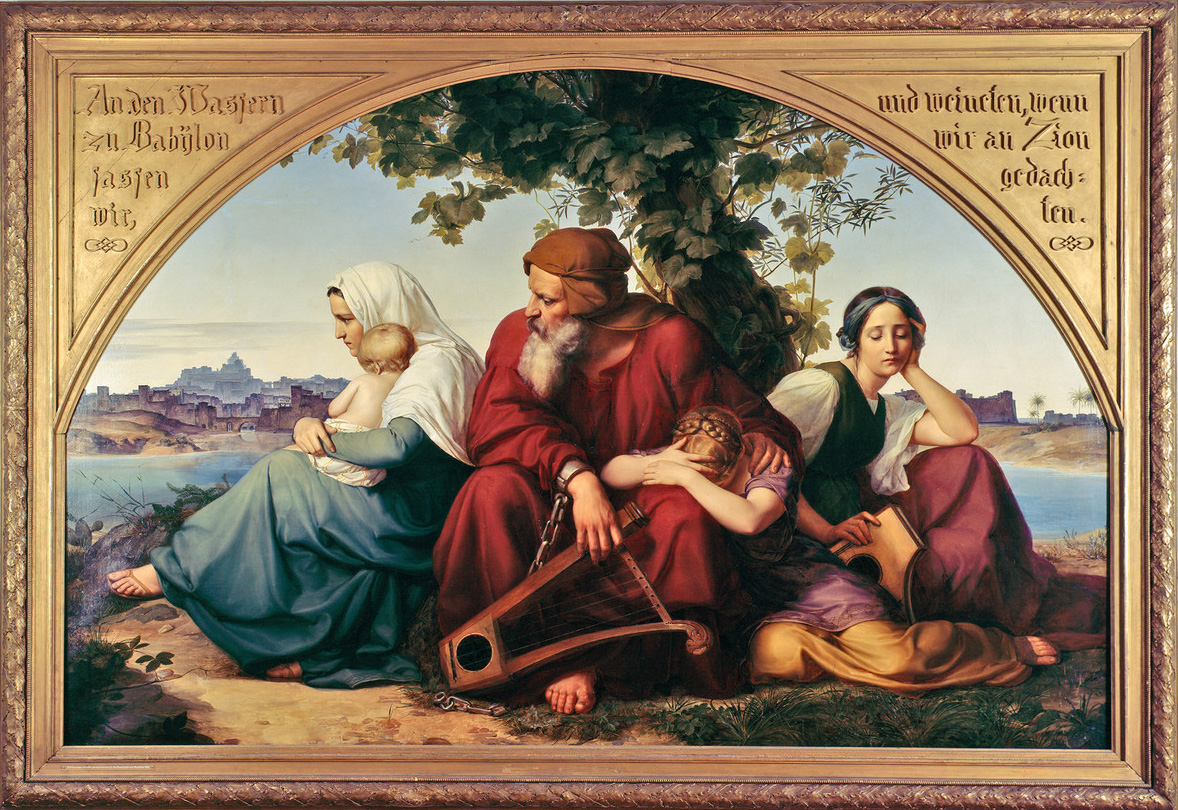Abstract
Eduard Bendemann (1811–1889) was one of the most prominent representatives of the Düsseldorf School of painting and one of the leading practitioners of academic history painting in Germany during the nineteenth century. Among his first major works was The Mourning Jews in Exile of 1832. The painting, which combines the intimacy and emotional intensity of genre painting with historical subject matter, became an instant popular and critical success. The striking palette and exotic setting lend drama to the scene, as does the tight composition, which focuses the viewer’s attention on the family, specifically the way in which the members interact—the feelings they try to express or conceal, not only through their facial expressions but also through touch and gesture. Bendemann’s parents had been born into Berlin’s Jewish community but converted to Protestantism before his birth. Bendemann showed a proclivity for religious art and often sought to introduce elements of the Old Testament into the salvation narrative of the New Testament. Here, Bendemann depicts the sadness and strength of the Jews in Babylonian captivity after their removal from Jerusalem, relying on the account from Psalm 137, where they were said to have sat and wept by the rivers of Babylon, refusing to perform the songs of their homeland for their captors. This version of the painting is from the Wallraf-Richartz Museum in Cologne; its splendid gilt frame includes the psalm’s opening lines: “We sat by the waters of Babylon and wept as we thought of Zion.” In Bendemann’s portrayal, the harps do not hang in the trees as in the Biblical verse, but rather rest on the ground.
